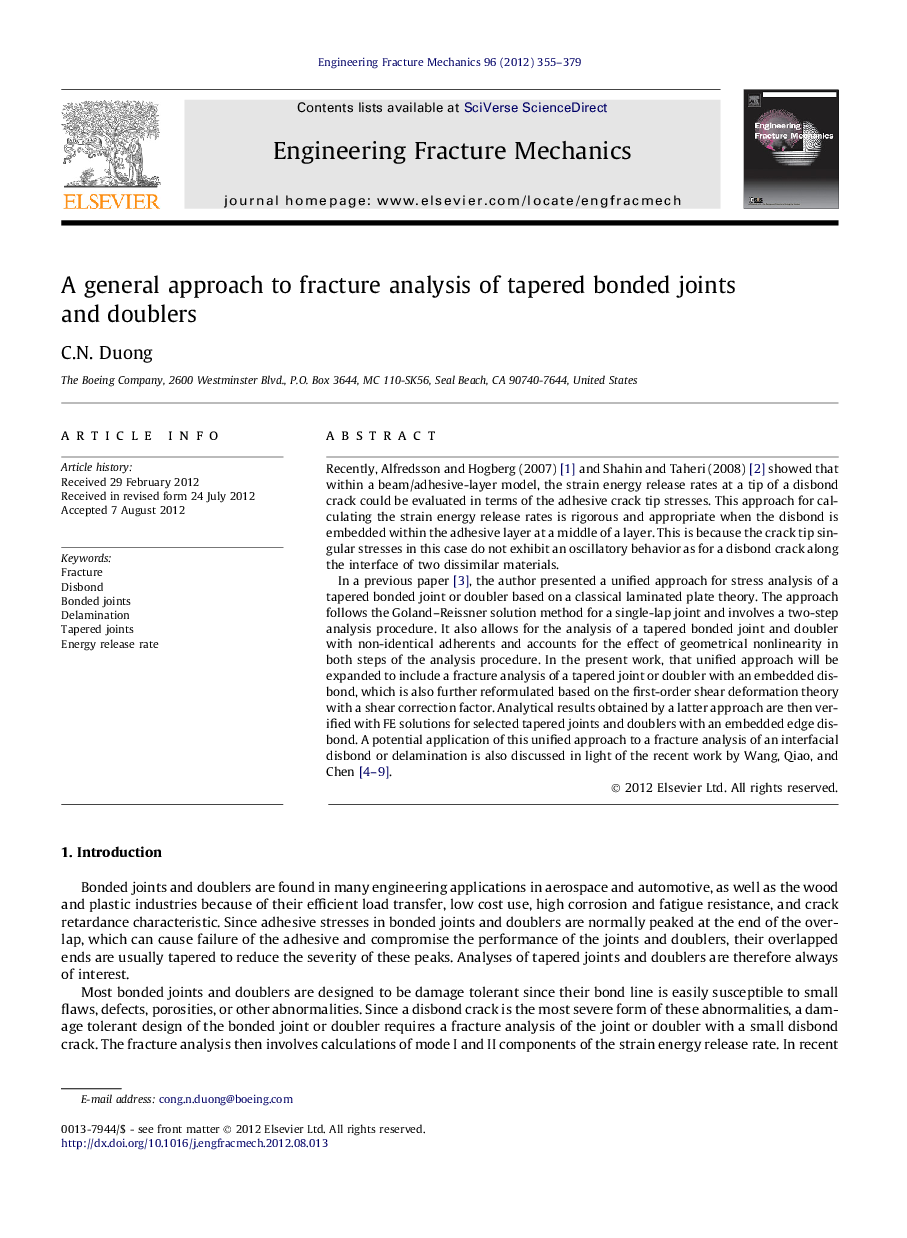| Article ID | Journal | Published Year | Pages | File Type |
|---|---|---|---|---|
| 770950 | Engineering Fracture Mechanics | 2012 | 25 Pages |
Recently, Alfredsson and Hogberg (2007) [1] and Shahin and Taheri (2008) [2] showed that within a beam/adhesive-layer model, the strain energy release rates at a tip of a disbond crack could be evaluated in terms of the adhesive crack tip stresses. This approach for calculating the strain energy release rates is rigorous and appropriate when the disbond is embedded within the adhesive layer at a middle of a layer. This is because the crack tip singular stresses in this case do not exhibit an oscillatory behavior as for a disbond crack along the interface of two dissimilar materials.In a previous paper [3], the author presented a unified approach for stress analysis of a tapered bonded joint or doubler based on a classical laminated plate theory. The approach follows the Goland–Reissner solution method for a single-lap joint and involves a two-step analysis procedure. It also allows for the analysis of a tapered bonded joint and doubler with non-identical adherents and accounts for the effect of geometrical nonlinearity in both steps of the analysis procedure. In the present work, that unified approach will be expanded to include a fracture analysis of a tapered joint or doubler with an embedded disbond, which is also further reformulated based on the first-order shear deformation theory with a shear correction factor. Analytical results obtained by a latter approach are then verified with FE solutions for selected tapered joints and doublers with an embedded edge disbond. A potential application of this unified approach to a fracture analysis of an interfacial disbond or delamination is also discussed in light of the recent work by Wang, Qiao, and Chen [4], [5], [6], [7], [8] and [9].
